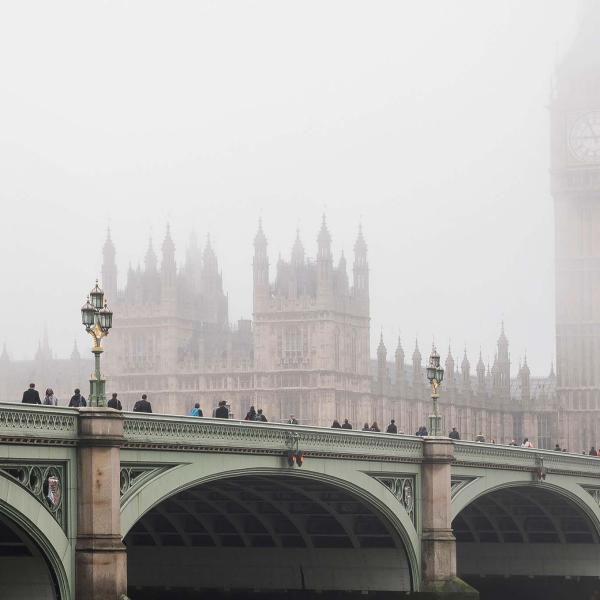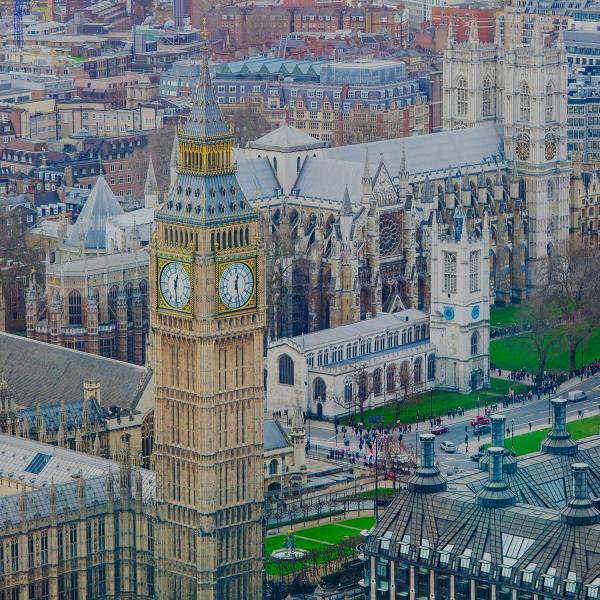Government borrowing this year will reach a level never before seen in the UK outside of the two world wars of the 20th century.
If that were just a one-off hike in borrowing to deal with the current crisis, it needn’t be cause for undue concern; but higher borrowing will be with us for some time to come.
- Under a central scenario, the economy in four years’ time would be 5% smaller than was projected back in March. This would mean a £100 billion hit to the public finances from lower tax revenues, even before any extra spending. In more pessimistic scenarios, with the effects of COVID-19 lingering for longer, government borrowing could easily exceed £200 billion in that year;
- These figures take no account of the almost inevitable increased spending pressures on the NHS, social care, track and trace etc. The government has already spent £70 billion on day-to-day public service spending in response to the pandemic. Even if three quarters of this spending ends this year, public spending and hence borrowing in 2024–25 could be at least £20 billion higher.
- This would not be consistent with debt even stabilising as a share of national income, let alone returning to pre-crisis levels.
- Even if all of the temporary giveaways to households, businesses and public services ended, public sector net debt would stabilise at much higher levels than we have seen in recent decades; under our central scenario we forecast public sector net debt to be just over 110% of national income in 2024–25. That is up from 80% prior to the pandemic and 35% in the years leading up to the financial crisis;
- Despite this, historically low interest rates mean that the forecast for debt interest spending has actually fallen since March. Any increase in interest rates from their current astoundingly low levels could, if not accompanied by stronger growth, be hugely problematic for the public finances. And with the new borrowing effectively financed at Bank Rate, any such rise in the cost of borrowing would hit the public finances immediately.
Even a government content to keep debt constant at 100% of national income, and borrowing at around £80 billion a year, would, under our central scenario, require a fiscal tightening worth around 2% of national income in 2024–25 – over £40 billion in today’s terms. Spending in areas affected by the ageing of the population will add another £36 billion or so a year of additional pressures each decade going forward. Further adverse economic shocks, or a rise in interest rates not associated with stronger economic growth, would also add to pressures.
Unless we are lucky, therefore, we will need tax rises of over £40 billion a year during the middle years of this decade just to stop debt spiralling upwards. That is the likely consequence of a smaller economy.
But now is not the time for tax increases or any other form of fiscal consolidation. Over the next 18 months at least, government policy needs to be focussed on supporting the economy almost irrespective of short-term impacts on borrowing. The low current cost of borrowing means that additional spending now that helped to deliver a more complete recovery would almost certainly be worth doing. Despite the claim by Chancellor Rishi Sunak last week that he would “always balance the books”, this will not happen, and he would be most unwise to try.
In these uncertain times stability and credibility in economic policymaking institutions is especially vital. The Chancellor and Prime Minister must do nothing to undermine either the actual or perceived independence of either the Bank of England or the Office for Budget Responsibility.
These are among the headline findings of the 2020 IFS Green Budget, in association with Citi and funded by the Nuffield Foundation. It also finds:
On the economy, analysis from Citi suggests:
- Every major economy bar China saw GDP shrink in the first half of this year, mostly by historically large margins. Spain and the UK grace the bottom of the table with output drops of roughly 20%, more than double the hit in the US or Germany.
- Even when the pandemic is over, there will be lingering effects on supply through lack of investment and ongoing hygiene measures. Demand will also be affected through increased caution, shifts in behaviour and unemployment. Even avoiding another round of major lockdowns, most economies will not return to pre-pandemic levels of output until 2021 or 2022.
- By the last quarter of 2020, the UK economy is likely to be more than 6% smaller than it was a year previously.This drop – worth £34 billion a quarter – is significantly larger than the peak-to-trough fall during the financial crisis. This follows a sharp rebound from the nearly 20% fall in the size of the economy in the second quarter of this year. But recovery will slow sharply from here; even by the end of 2024, GDP may be only around 2% above Q4-2019 levels, and nearly 5% below its pre-crisis trend.
- Payroll data to August suggests there had already been a loss of over 700,000 employee jobs, even before the end of the initial furlough scheme. The unemployment rate is likely to increase to around 8–8.5% (2.7–2.9 million people) in the first half of 2021. The upper end of this range would see unemployment at its highest level since the early 1990s.
- Brexit remains a substantial economic challenge for the UK. A thin trade deal with the EU will likely leave the UK economy around 2% smaller in 2021 than in a counterfactual where the transition period continues indefinitely; a no-deal exit could add another 0.5–1.0% to the hit. Whilst the economy has already been hit by uncertainty associated with the Brexit vote, the majority of the economic costs associated with Brexit still lie ahead, and are likely to be felt quite quickly and sharply after the transition period ends. These effects will likely hit employment, as well as investment.
- Adjustment to a post-COVID, post-Brexit new normal will have economic costs that last into the long term. A permanent shift away from the consumer services sector (due to COVID) and some parts of manufacturing and financial/business services sectors (due to Brexit) would make much of the accumulated capital and skills in these sectors less valuable. For workers, the longer they remain unemployed, the worse their prospects in the labour market. This can have consequences that last for decades.
- Weak inflation means monetary and fiscal policy will likely remain aligned for now. However, in the medium term, this cannot be guaranteed. Higher rates of imported and goods inflation could pose risks. Perhaps the greatest challenge here would be an upward shift in household inflation expectations. These have been heavily disrupted by COVID -19.
On debt financing, analysis by IFS suggests:
- At least for now, the Government can borrow very cheaply. Short- and long-maturity gilt yields have fallen even further from the already low rates seen prior to the pandemic and, as in the Eurozone and the US, yields are now much closer to the very low rates that have become typical for Japan.
- The large expansion of the Bank of England’s programme of quantitative easing reduces the cost of government borrowing, but it also means that the government’s debt interest bill will rise sharply if Bank Rate rises. A 1 percentage point increase in all yields would now add £19 billion to debt interest spending in 2024–25, some 76% higher than the £11 billion estimated in March 2020.
- A risk to the public finances is that yields rise but growth prospects do not. One way to address this risk is by selling more long gilts. Long-term rates are extraordinarily low. The latest auction of long-maturity index-linked gilts led to £459 million being raised at a real yield to maturity (based on RPI indexation) of –2.0% a year through to 2056: this guarantees investors that, in RPI-adjusted terms, they will get back only around 50% of their investment. Contrary to the direction of recent policy, there could be considerable benefits from tilting the UK’s debt portfolio even more towards long-dated index-linked gilts. This would lock in the current very low real rates for a greater share of government debt.
- Changes – or even just a perceived appetite for changes – to the institutional structure of UK fiscal and monetary policy could put upward pressure on the risk premium for gilts, even if the underlying natural rate of interest, and expected growth, remain very low. The Chancellor needs to signal that he takes the long-run health of the public finances seriously, that he fully respects the independence of the Monetary Policy Committee, and that he will not water down the inflation target in an attempt to help manage the public finances.
Paul Johnson, IFS Director and an editor of the Green Budget, said:
‘This government has chosen to pump an additional £200 billion into the economy to support jobs, businesses and incomes this year. That is a level of fiscal support unprecedented in peace time. For now, with borrowing costs extremely low, Mr Sunak shouldn’t worry unduly about the debt being accrued as a result. It is necessary. Well directed investment spending over the coming period could help with growth and hence, eventually, the fiscal numbers.
Unfortunately, none of this will be enough fully to protect the economy into the medium run. We are heading for a significantly smaller economy than expected pre-COVID, and probably higher spending too. Without action, debt – already at its highest level in more than half a century – would carry on rising. Tax rises, and big ones, look all but inevitable, though likely not until the middle years of this decade.
So far, the challenge to the public finances has been eased by historically low interest rates. But this is also a vulnerability: successive rounds of quantitative easing mean that debt interest spending will rise sharply and suddenly with any increase to the Bank Rate. In these circumstances any weakening of the independence of either the Bank of England or the Office for Budget Responsibility could be disastrous, as could any sense that the government did not have the health and stability of the economy and public finances at the centre of its concerns. Locking in more government borrowing on a long-term, inflation-linked basis would ensure that the real cost of a greater share of government debt was locked at current low levels and would provide a signal that the Government would not be tempted to try to inflate away debt.’
Christian Schulz, Chief UK Economist at Citi, said:
‘The COVID-19 pandemic triggered historically deep recessions around the world in the first half of 2020. The end of the lockdowns has allowed a big rebound in activity, but it will take a year or two to reach pre-crisis levels of output even if governments avoid a new round of disruptive containment measures. Lingering effects and structural reconfiguration of demand and supply will probably drag out the return to pre-crisis trend levels beyond 2024.
The UK struggled longer to contain the first wave of the pandemic, experiencing a longer lockdown and a deeper recession than most other major economies. Structural vulnerabilities of the UK economy, such as its large service sector and the high degree of urbanisation, suggest it will also underperform in the rebound. In this situation, leaving the EU Single Market and Customs Union, with a rudimentary trade deal or with no deal at all, makes us even more pessimistic about the chances for a V-shaped recovery. We expect that the Bank of England and the Treasury will do more to support businesses and households through these troubled times.’
Tim Gardam, Chief Executive of the Nuffield Foundation, said:
‘The IFS Green Budget injects independent evidence into the public conversation about how to respond to the huge economic and social challenges currently facing the UK. In its framing of the economic outlook, the IFS shows that ultimately, the questions to be addressed are about people’s well-being and the safeguarding of our health, livelihoods and public services in a time of crisis.’
















